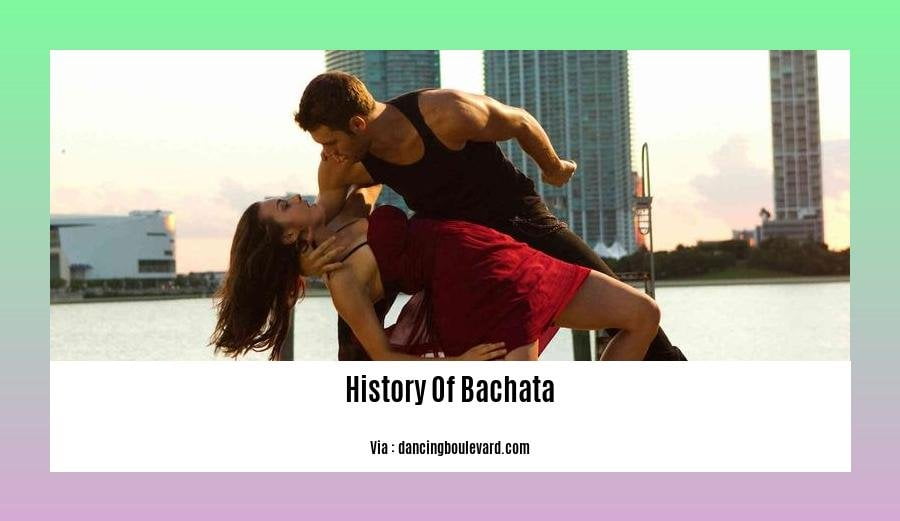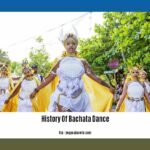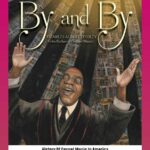Prepare to embark on a captivating journey through the vibrant history of bachata in our article, “Unveiling the History of Bachata: A Journey Through Rhythms and Roots.” From its humble origins in the Dominican Republic to its global domination, we’ll delve into the rich tapestry of influences that have shaped this captivating genre, exploring its evolution into a global phenomenon that continues to captivate hearts worldwide.
Key Takeaways:
-
Bachata originated in the 1960s in the Dominican Republic’s countryside, initially focusing on guitar and heartfelt love stories.
-
Traditionally, it was performed in bars and brothels, leading to its initial suppression due to its association with the lower classes and censorship.
-
The traditional Bachata step involves counting one, two, three, hip, with a distinct hip action.
-
The music faced challenges due to its association with the lower classes and censorship under Trujillo’s dictatorship.
-
Three popular Bachata styles include Traditional, Moderna, and Sensual.
-
Competitions are held worldwide to showcase the artistry and skill of Bachata dancers.
History of Bachata: A Journey Through Rhythms and Roots
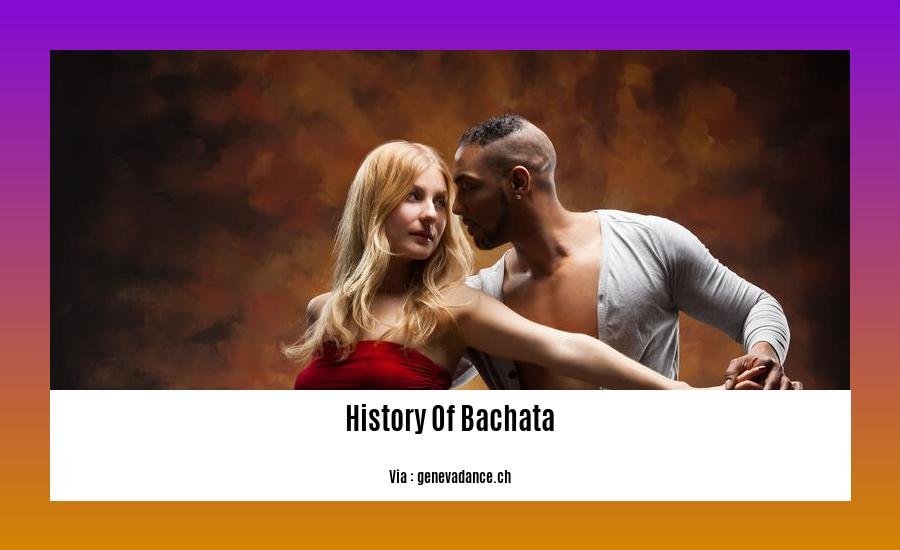
Bachata, a captivating rhythm originating from the Dominican Republic, didn’t just burst onto the music scene fully formed. Let’s rewind to the 1960s, when guitars strummed and love stories unfolded in the countryside, giving birth to this soulful genre.
From Humble Beginnings:
-
In its nascent stage, bachata found its home in bars and brothels, clandestinely thriving amidst society’s disapproving gaze.
-
The Dominican dictatorship under Trujillo’s regime viewed bachata with disdain, censoring and suppressing its growth.
-
Yet, like a resilient flower, bachata persisted, resonating with the emotions of the working class who found solace in its poignant lyrics.
Evolving and Thriving:
-
The 1980s marked a turning point, as bachata’s popularity soared and it transitioned from a marginalized genre to a celebrated form of expression.
-
Artists like Juan Luis Guerra helped propel bachata into the mainstream, capturing the hearts of audiences worldwide.
-
The genre continued to evolve, branching into captivating styles like bachata moderna and sensual bachata, each with its unique flair and elegance.
Global Phenomenon:
-
The 2000s witnessed bachata’s global triumph, captivating audiences from Madrid to Tokyo.
-
Its infectious rhythms and emotional melodies transcended cultural boundaries, uniting people in their love for this multifaceted genre.
-
Dance competitions sprang up, providing a platform for bachateros to showcase their artistry and grace, further propelling bachata’s rise to prominence.
Bachata Today:
-
In the present day, bachata stands tall as a symbol of cultural pride and unity, reaching far beyond its humble origins.
-
It continues to inspire and captivate, a testament to its enduring power.
-
Dive into the historical timeline of Apple computers, chronicling their journey from humble beginnings to becoming industry giants. history of apple computers timeline
-
Travel through time with the Apple Inc timeline poster, showcasing the major milestones and innovations that shaped the company’s legendary journey. history of apple inc timeline
-
Unleash your artistic curiosity with our comprehensive history of art timeline poster, a captivating visual journey through the evolution of artistic movements and masterpieces. history of art timeline poster
The Dominican Republic: The Birthplace of Bachata
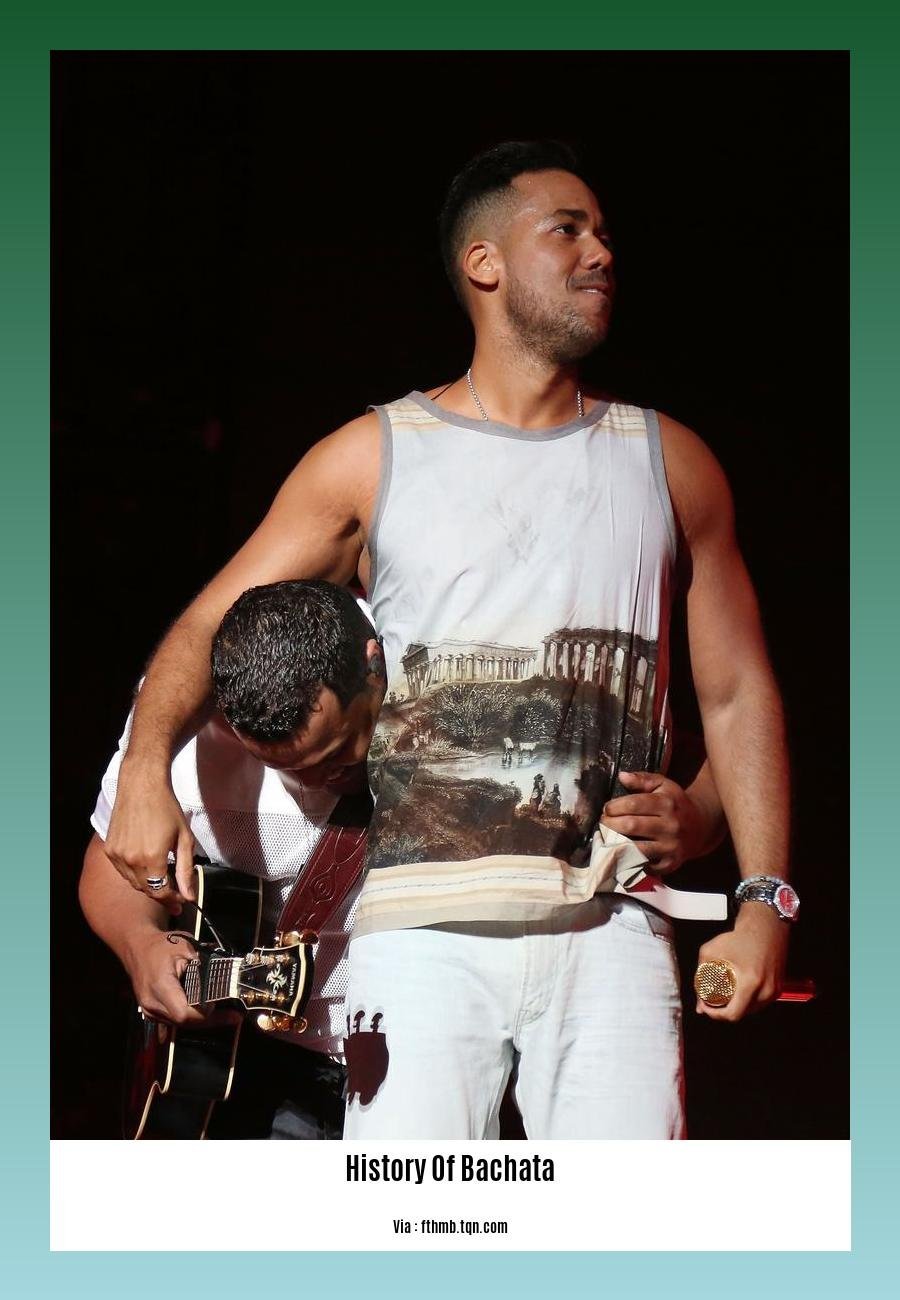
Bachata’s rich history is woven into the vibrant tapestry of Dominican culture and the spirit of its people. Ready to dive into the captivating story of its origins?
In the Realm of Rhythm and Roots
In the Dominican Republic, where the sun shines bright and the music pulsates with life, bachata emerged from humble beginnings in the 1960s. Initially, it was known as amargue music, reflecting the bittersweet melodies that resonated with the emotions of the working class. These rhythms drew inspiration from bolero, Cuban son, and the vibrant sounds of Mexican and Puerto Rican trios.
The Journey from the Shadows
Bachata’s early days were marked by resistance from the Dominican upper class during the 1960s and early 1970s, who viewed it as vulgar music associated with the lower class. This perception was born from its strong presence in bars and brothels, delaying its widespread recognition.
The Melody of Acceptance
In the 1980s, bachata finally broke free from its societal constraints, thanks to the efforts of talented pioneers who dared to share its charms with the world. Artists like Juan Luis Guerra played a pivotal role in propelling bachata into the mainstream, capturing the hearts of audiences with their soulful melodies and heartfelt lyrics.
Embracing Variety
As bachata gained popularity, it embraced diversity, giving birth to captivating styles that catered to different tastes. Bachata moderna emerged, adding a touch of modernity to the traditional sound, while sensual bachata captivated listeners with its slow, romantic rhythms.
The Global Phenomenon
Bachata’s allure transcended borders, captivating audiences worldwide in the 2000s. Its infectious rhythms and heartfelt lyrics resonated with people from all walks of life, making it a global phenomenon. The genre’s global success was fueled by dance competitions that showcased the artistry and grace of bachateros, further solidifying its position on the world stage.
Today’s Vibrant Bachata
Fast forward to the present, and bachata stands as a symbol of cultural pride and unity for the Dominican people. Its ability to connect with diverse audiences is a testament to its power to move hearts and inspire souls. The genre continues to evolve, with new artists emerging to carry its legacy forward, ensuring that the captivating rhythms of bachata will continue to captivate generations to come.
Key Takeaways:
- Bachata emerged in the Dominican Republic in the 1960s, drawing inspiration from various musical styles.
- Initially associated with lower-class society and confined to bars and brothels, bachata faced resistance from the Dominican upper class.
- In the 1980s, bachata gained mainstream recognition, thanks to artists like Juan Luis Guerra.
- The genre diversified, leading to the creation of captivating styles like bachata moderna and sensual bachata.
- In the 2000s, bachata became a global phenomenon, transcending cultural boundaries and captivating audiences worldwide.
- Today, bachata is a symbol of cultural pride for the Dominican people and continues to inspire and captivate audiences globally.
Bachata (music) – Wikipedia
What is the Bachata? : History and Origins
Global Reach: The Rise of Bachata as a Worldwide Phenomenon
Bachata: A Tale of Cultural Unity Through Rhythm
Bachata, an enthralling music genre rooted in the Dominican Republic’s soul, has mesmerized global audiences with its captivating rhythms and heartfelt lyrics, becoming a true cultural unifier. Join us as we explore the incredible journey of this genre, uncovering the secrets behind its worldwide acclaim.
Key Takeaways of Bachata’s Global Voyage:
-
Humble Beginnings: Born in the 1960s Dominican Republic, Bachata emerged from the fusion of bolero, bolero, Cuban son, and merengue, captivating the emotions of the working class and overcoming initial societal resistance.
-
The 1980s Revolution: A surge in popularity marked the 1980s as bachata’s breakthrough decade. Modern instrumentation and romantic lyrics propelled the genre into the mainstream, gracing dance clubs and airwaves across the nation.
-
Kings of Bachata: Juan Luis Guerra and the group Aventura emerged as bachata’s global ambassadors, charming audiences with their infectious melodies and poetic lyrics, paving the way for the genre’s international domination.
-
Global Phenomenon: Today, Bachata has become a global phenomenon, captivating hearts from Europe to the Americas and beyond. Its energetic rhythms and sensual dance moves have turned it into a beloved genre, transcending cultural barriers and uniting people through the shared language of music.
-
Cultural Legacy: Bachata represents the resilience and perseverance of the Dominican people, a genre born from the streets that has found its way onto the world stage, serving as a source of pride and unity for Dominicans worldwide.
Conclusion: The Soulful Journey of Bachata
Bachata’s journey from its humble beginnings to its global triumph is a testament to the power of music to transcend boundaries. The genre’s ability to capture the essence of love, heartbreak, and cultural pride has resonated with audiences worldwide, making it a beloved and celebrated genre. As we continue to witness bachata’s global influence, one can’t help but marvel at its ability to unite people through the universal language of rhythm and emotion.
Sources:
-
Bachata: From the Margins to the Mainstream
The Future of Bachata: Enduring Legacy and Continued Growth
Authentic and captivating, Bachata has engraved its name in the annals of music history. A genre that originated in the Dominican Republic, its roots run deep in bolero, son, and merengue. In the 60s, in the heart of the Dominican Republic, bachata found its rhythm. From humble beginnings, it grew, traversing cultural borders and captivating hearts worldwide.
Key Takeaways:
-
Bachata’s evolution showcases its resilience and adaptability, transforming from a stigmatized genre to a global phenomenon.
-
Its captivating rhythms and sensual dance style have made it a beloved genre, transcending cultural and linguistic barriers.
-
Contemporary artists continue to push boundaries, fusing bachata with other genres, creating a diverse and vibrant musical landscape.
-
The enduring legacy of bachata lies in its ability to evoke emotions, connect people, and serve as a soundtrack for countless moments of joy, romance, and cultural expression.
-
The future of Bachata is bright, with a global community of passionate fans, dancers, and musicians working tirelessly to preserve and promote this rich musical tradition.
With its unique blend of romanticism, sensuality, and cultural pride, the future of bachata appears vibrant and promising. As the genre continues to evolve and captivate audiences worldwide, it’s clear that Bachata’s legacy will endure for generations. Its journey from humble origins to global stardom is a testament to the power of music to transcend boundaries and unite people around shared passions.
Sources:
[1] The History of Bachata: From Roots to Global Phenomenon
[2] Bachata: From the Margins to the Mainstream
FAQ
Q1: What are the origins of Bachata music?
A1: Bachata originated in the Dominican Republic during the 1960s, evolving from diverse musical influences such as bolero, son, and merengue. Initially associated with the lower classes, it gained popularity among all social classes in the 1980s, becoming a global phenomenon in the 2000s.
Q2: How did Bachata gain popularity beyond the Dominican Republic?
A2: In the 1980s, Bachata began to gain popularity beyond the Dominican Republic due to modern instrumentation and production techniques, which gave it a more polished sound. The lyrics also became more romantic and poetic, focusing on themes of love and heartbreak. Artists like Juan Luis Guerra and Aventura played a significant role in popularizing Bachata globally.
Q3: What are the characteristics of Bachata music?
A3: Bachata is characterized by its romantic and sensual lyrics, typically played in a 4/4 time signature with a moderate tempo. The dance style involves close embraces and fluid movements, making it a popular choice for social dancing.
Q4: What are the different styles of Bachata?
A4: Bachata has several subgenres, including traditional, modern, and urban bachata. Traditional Bachata is characterized by its simpler rhythms and dance moves, while modern Bachata incorporates more complex rhythms and choreography. Urban Bachata, also known as Dominican Bachata, is a fusion of traditional Bachata with elements of hip-hop and R&B.
Q5: Why was Bachata initially stigmatized?
A5: Initially, Bachata was associated with the lower classes in the Dominican Republic and was often played in bars and brothels. This led to its stigmatization and resistance from the upper classes, who viewed it as vulgar and rustic. It was not until the 1980s that Bachata began to gain wider acceptance and recognition in Dominican society.
